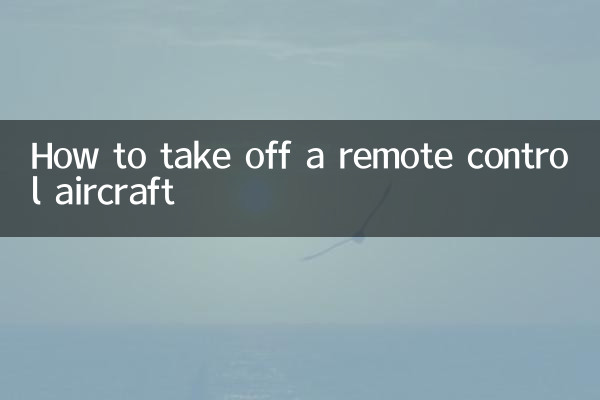How to take off a remote control aircraft
In recent years, remote-controlled aircraft (drone) have gradually become the darling of technology enthusiasts and photographers. Whether used for aerial photography, entertainment or professional operations, mastering the correct takeoff method is the first step to ensuring flight safety. This article will combine popular topics and hot contents across the network for the past 10 days to introduce you in detail the takeoff steps, precautions and related data of the remote-controlled aircraft.
1. Takeoff steps of remote control aircraft

1.Check the equipment: Ensure that the battery of the remote control and aircraft is sufficient, and the propeller is installed firmly without damage.
2.Choose a venue: The take-off site should be open and unobstructed, away from crowds and buildings, and avoid interference with signals.
3.Calibration compass: Calibrate the compass according to the aircraft instructions to ensure the accurate flight direction.
4.Start the motor: The motor is usually started by a combination of the remote control buttons (such as "left rocker down + right rocker inward").
5.Push the throttle slowly: Gently push the left rocker (throttle), keep hovering after the aircraft is off the ground, confirming stability.
6.Adjust posture: Control the flight direction through the right rocker and gradually increase to the target height.
2. Popular remote control aircraft models and takeoff parameters
| model | Maximum takeoff weight | Takeoff time (full battery) | Recommended takeoff altitude |
|---|---|---|---|
| DJI Mavic 3 | 900g | 2 minutes | 1.5 meters |
| Autel EVO Lite+ | 820g | 1.5 minutes | 1.2 meters |
| Holy Stone HS720 | 500g | 1 minute | 1 meter |
3. Hot topics and aircraft related trends in the past 10 days
1.UAV regulations update: Many places have issued new regulations requiring aircraft to register in real name before taking off, and the flight altitude is limited to 120 meters.
2.Intelligent obstacle avoidance technology: The new aircraft are generally equipped with a multi-directional obstacle avoidance system to reduce the risk of takeoff and collision.
3.Environmentally friendly aircraft: The battery recycling issue of electric aircraft has caused heated discussions, and manufacturers have launched biodegradable accessories.
4.Aerial photography events: The International Drone Racing League opens, and players share their quick takeoff skills.
4. Things to note when taking off
1.Weather Conditions: Avoid taking off in strong winds, rains, snowstorms or strong light environments, which may affect stability.
2.Signal interference: Stay away from interference sources such as high voltage lines and Wi-Fi routers.
3.Emergency handling: If the aircraft jitters or shifts abnormally, land immediately and check for the fault.
4.Battery Management: The battery temperature should be at 10-40℃ before takeoff, as low temperature may cause a sharp drop in power.
5. Expert advice
According to recent aerial photography community surveys, 75% of flight accidents occur during the takeoff stage. Recommended for beginners:
- Practice takeoff using the introductory mode (height limit of 30 meters);
- Preferring to environments with strong GPS signals (≥8 satellites);
- Watch teaching videos before the first flight and be familiar with the remote control button function.
Mastering the correct takeoff method can not only extend the life of the equipment, but also ensure the safety of others. With the advancement of technology, aircraft may achieve fully automatic takeoff in the future, but basic operating knowledge has always been the core of flight fun.

check the details

check the details